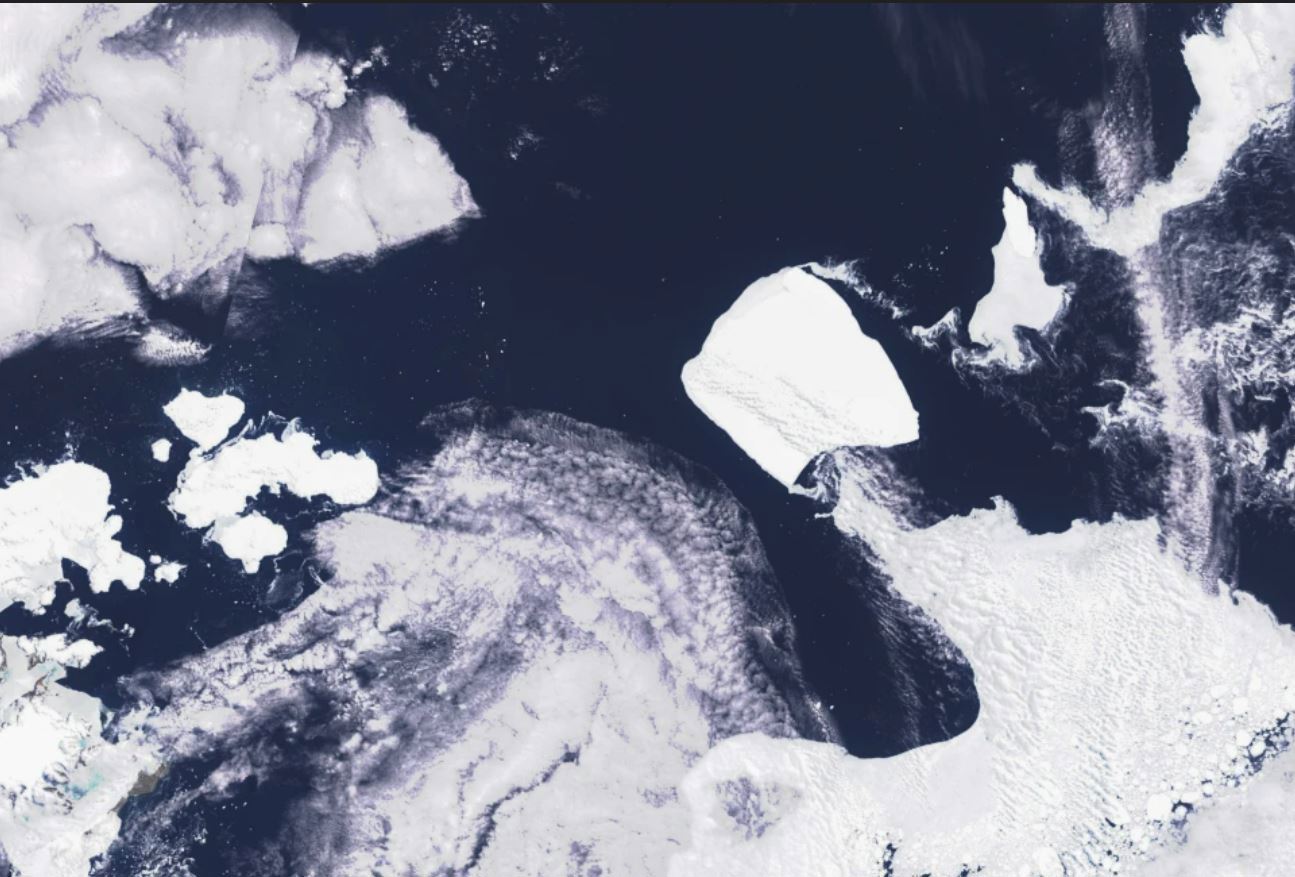
The world’s biggest iceberg has become trapped, stopping in its tracks during a mammoth journey north from Antarctica.
Known as A23a among science circles, the iceberg is more than twice the size of the Australian Capital Territory, Greater London and three times the size of New York City.
The iceberg is believed to weigh almost one trillion tonnes and first broke free from the Antarctic coastline in 1986.
READ MORE: Bungled restoration of historic Spanish church raises eyebrows with ‘caricature-like’ cherub
But almost immediately after making its great escape, A23a got bogged in the muddy depths of the Weddell Sea and stayed put for 34 years.
It then re-floated in 2020 and resumed its journey north, towards the warmer air and waters of the South Atlantic where many smaller icebergs break down to an eventual nothing.
But in April this year, A23a entered the Antarctic Circumpolar Current (ACC) a powerful force that pumps the ocean waters and whatever is in them (no matter its size) north to what should have been the gigantic iceberg’s eventual demise.
However when A23a entered the ACC, it suddenly stopped again.
Only, it isn’t bogged this time, in fact, there is at least 1000 metres of water between its base and the ocean floor.
A23a is laying idle, floating on the spot just north of South Orkney Island and randomly turning anti-clockwise at about 15 degrees a day.
OLYMPIC HUB: You can find all the latest Paris 2024 stories from Wide World Of Sport here
Why is this happening?
A23a has become caught in a Taylor Column and could stay stuck for a number of years, delaying the eventual breakdown all icebergs on that same northern route endure.
Open University researcher, Professor Mark Brandon told BBC News icebergs are often seen as transient things; they fragment and melt away.
But not this one.
“A23a is the iceberg that just refuses to die,” he said.
A Taylor Column is a type of vortex first described in the 1920s by physicist, Sir Geoffrey Ingram Taylor.
The Cambridge academic was a pioneer in the field of fluid dynamics and showed how a current that meets an obstruction on the seafloor can – under the right circumstances – separate into two distinct flows, generating a full-depth mass of rotating water between them, BBC News reported.
In the instance of A23a, the obstruction is a 100km-wide bump on the ocean bottom known as Pirie Bank.
The Taylor Column vortex sits on top of the bank and for now A23a is caught in its web.
OLYMPIC SCHEDULE: Your day-to-day guide to all the action in Paris, in AEST times
The British Antarctic Survey’s Professor Mike Meredith said Taylor Columns can also form in the air and are seen in clouds moving above mountains and can be any size.
A23a has been slowly spinning on the spot for a few months now, but it is unknown how long it will remain trapped.
But when Professor Meredith placed a scientific buoy in a Taylor Column above another bump to the east of Pirie Bank, the instrument remained in place, slowly rotating and floating on the spot, four years later.
Watch every moment, every medal of the Olympic Games Paris 2024 live and free on Channel 9 and 9Now. Plus, every event ad-free and in 4K on Stan Sport.
links to content on ABC
9News





